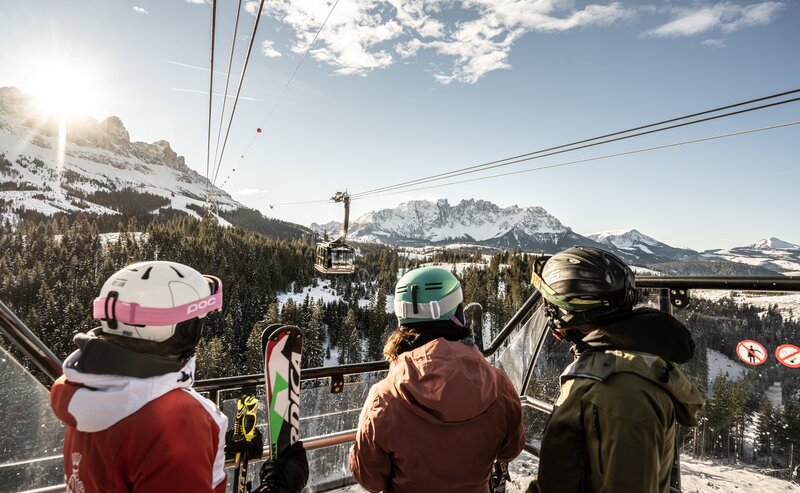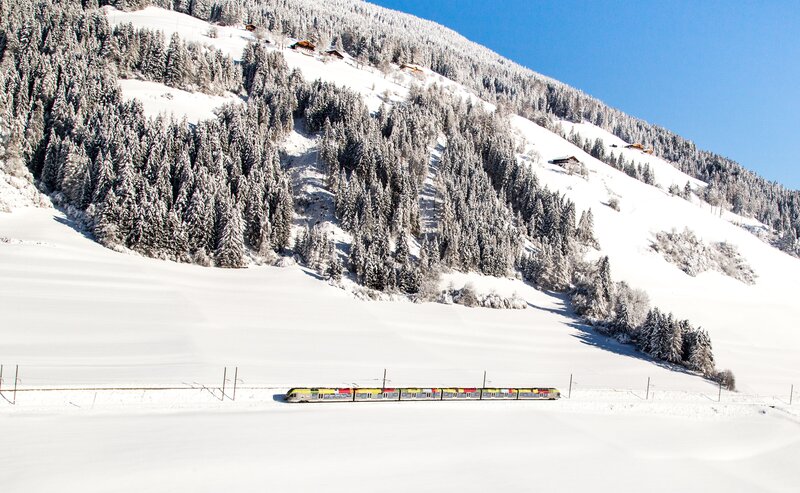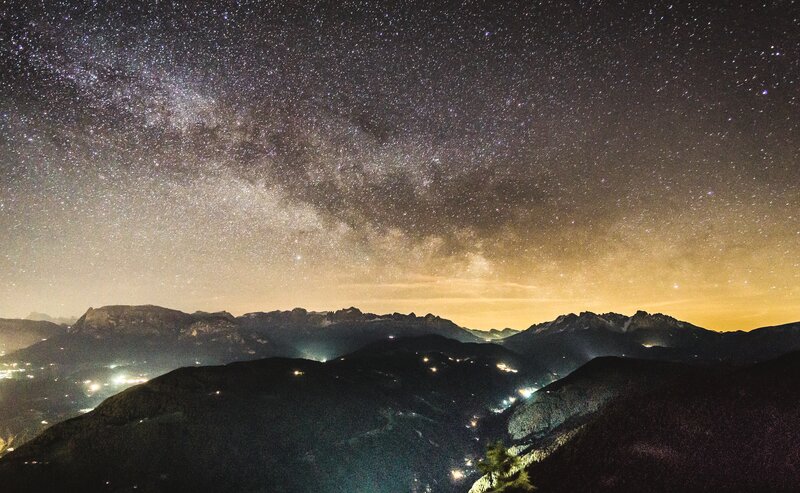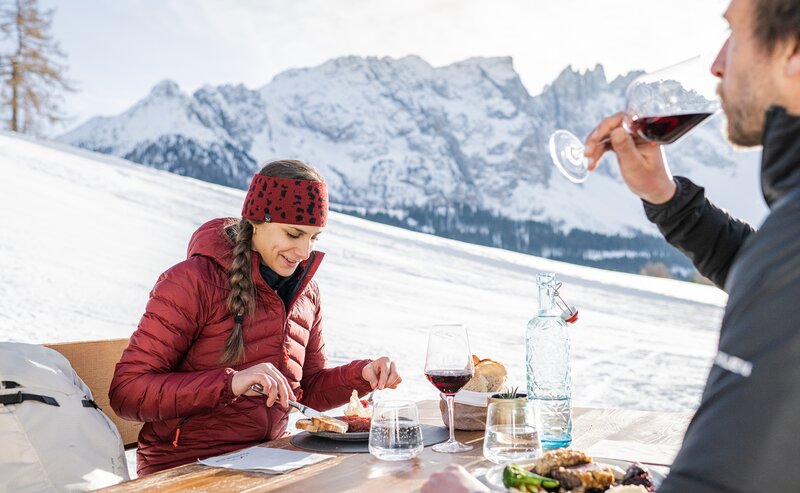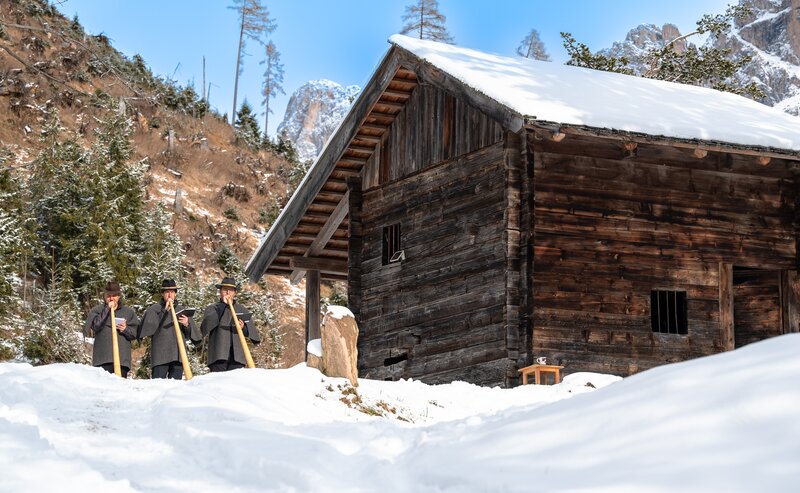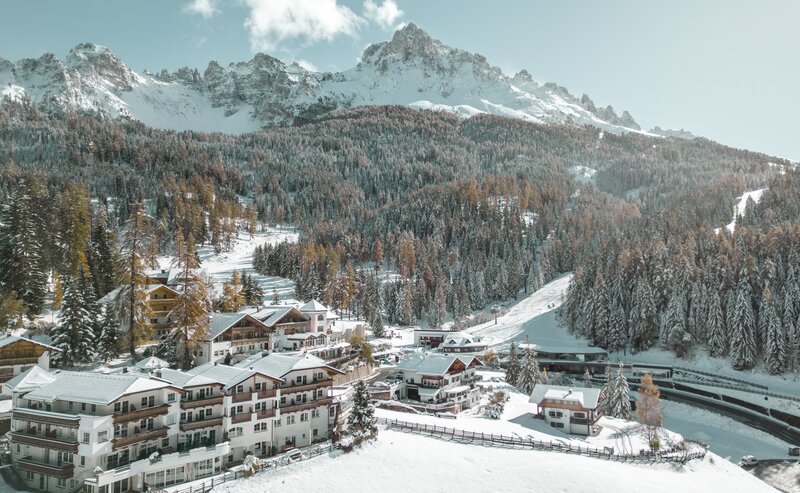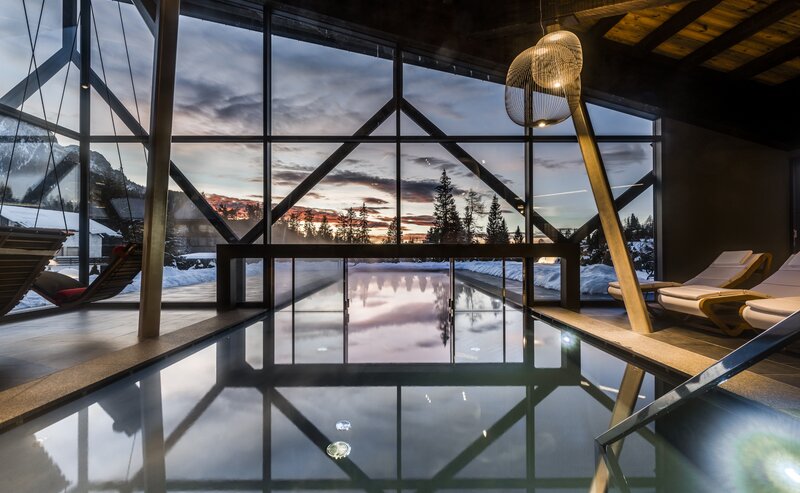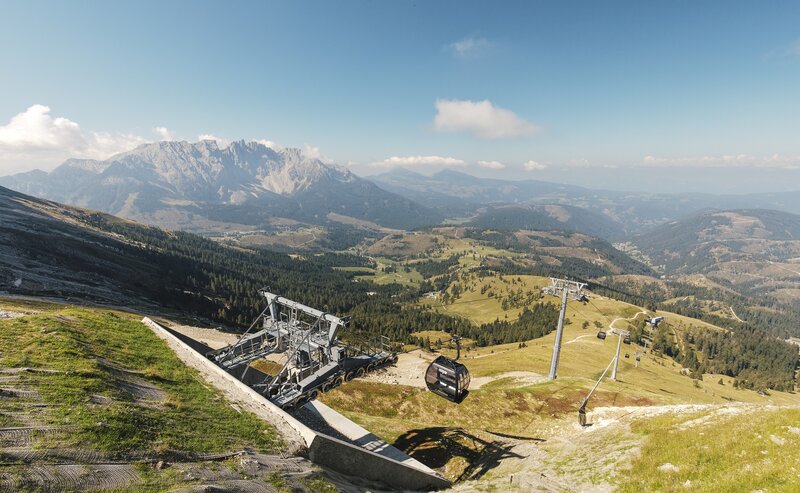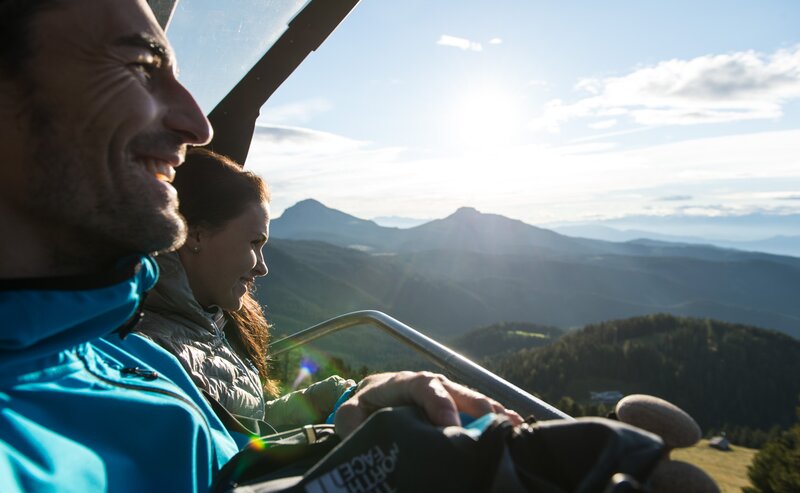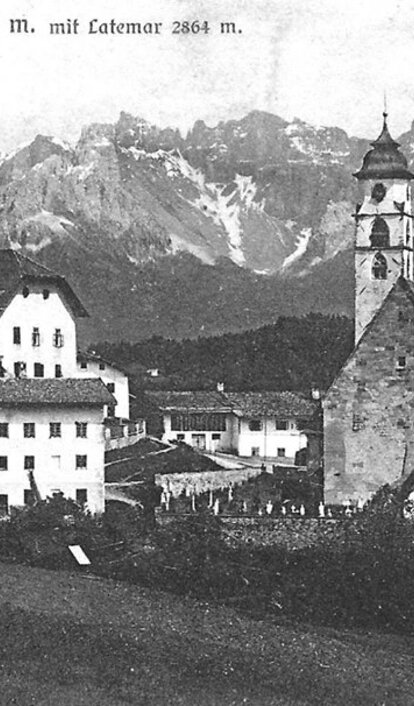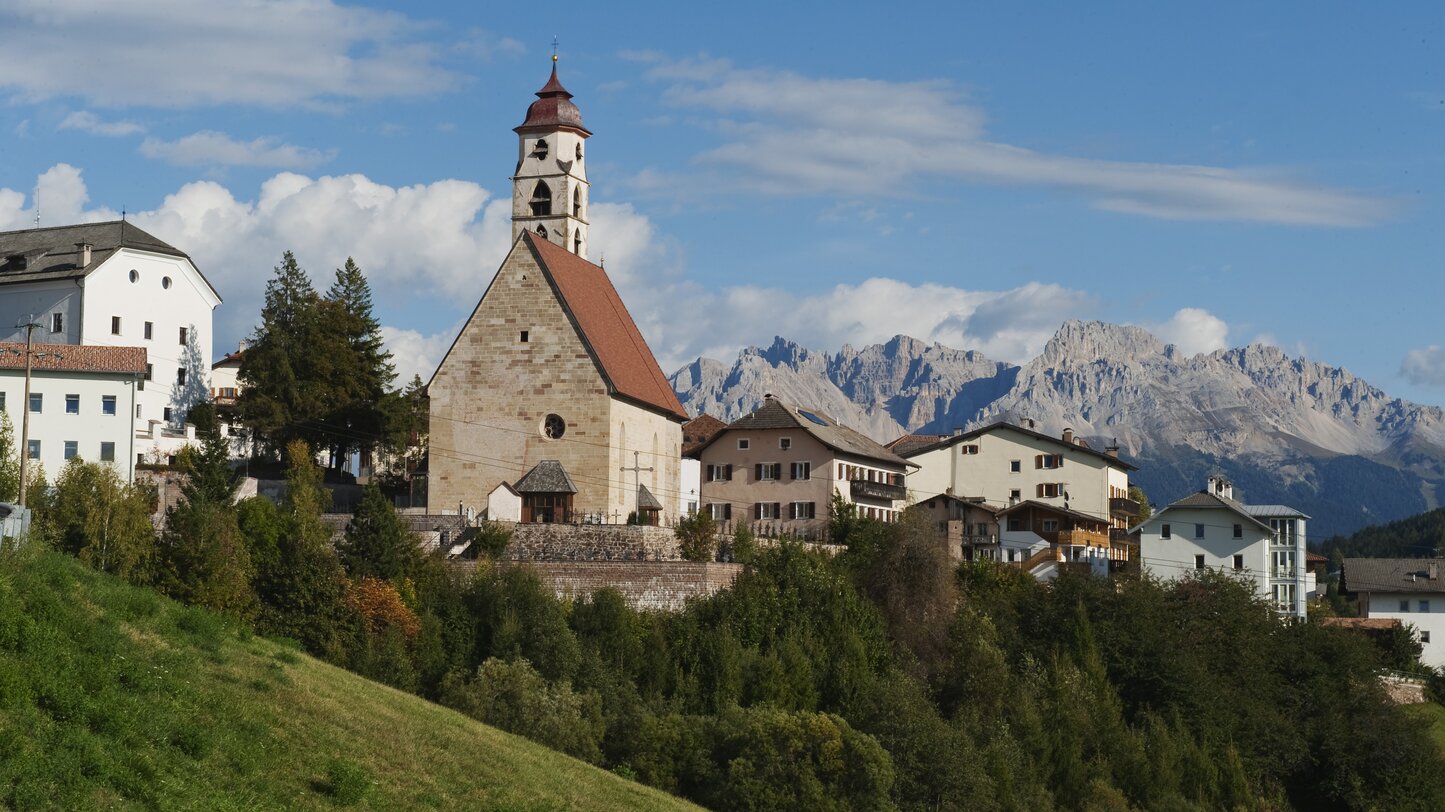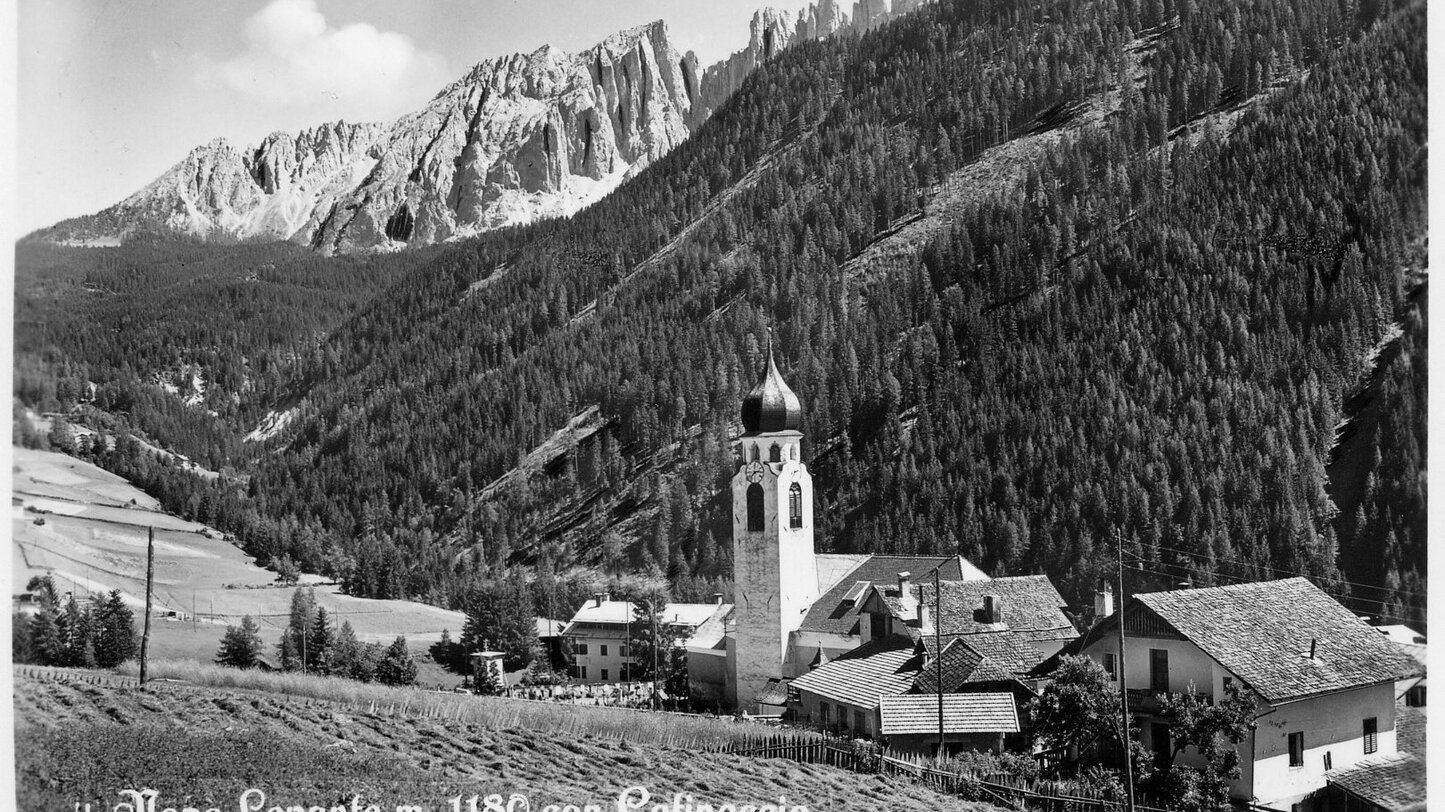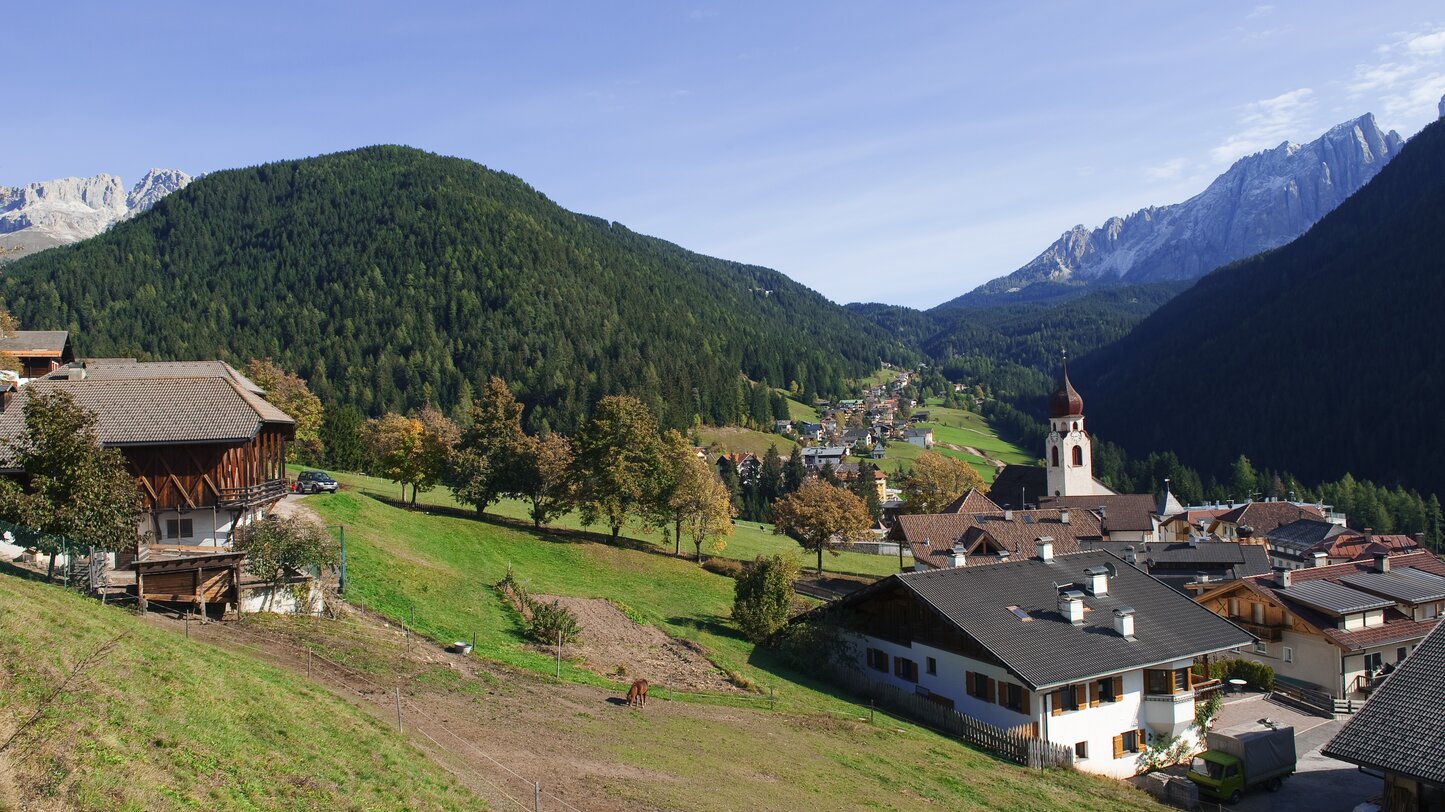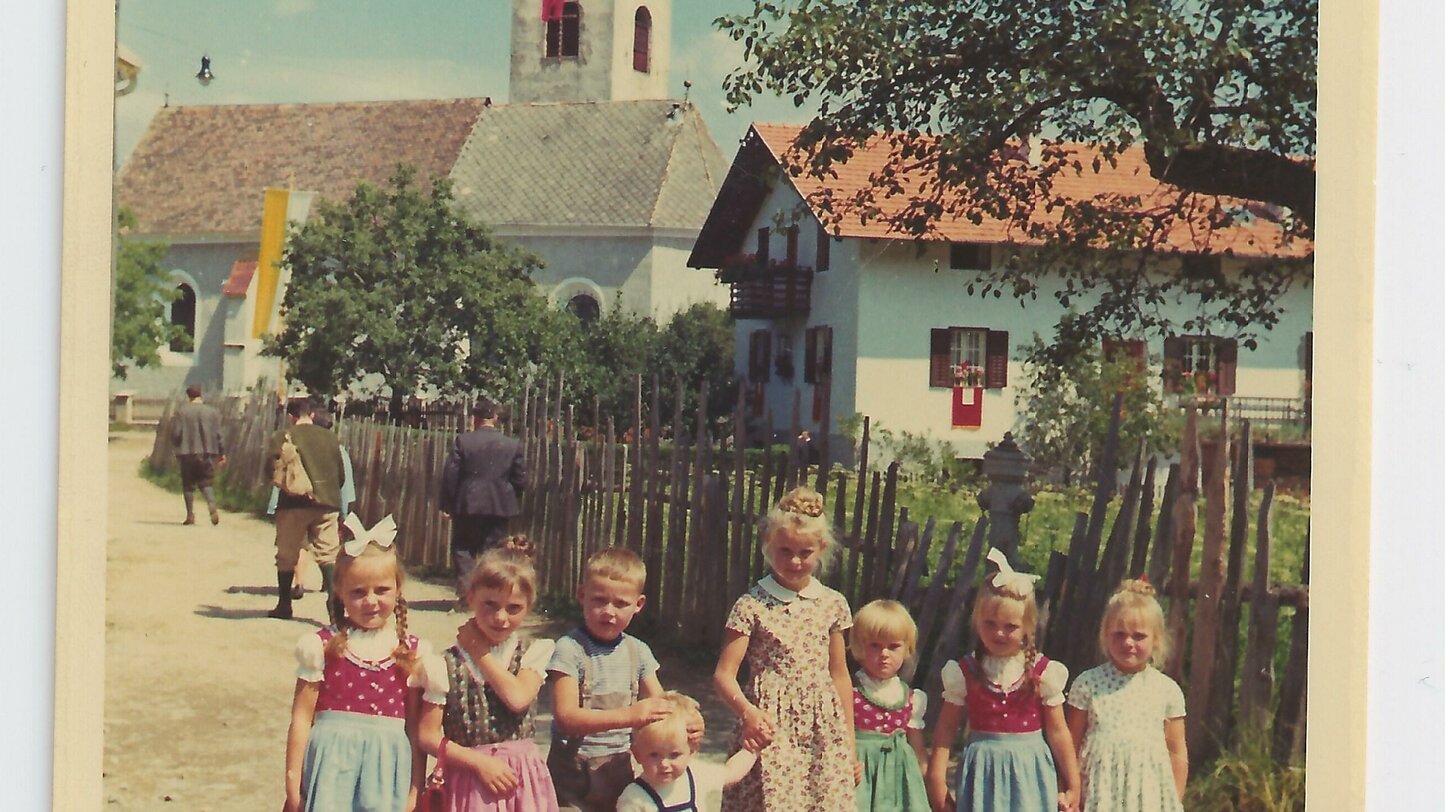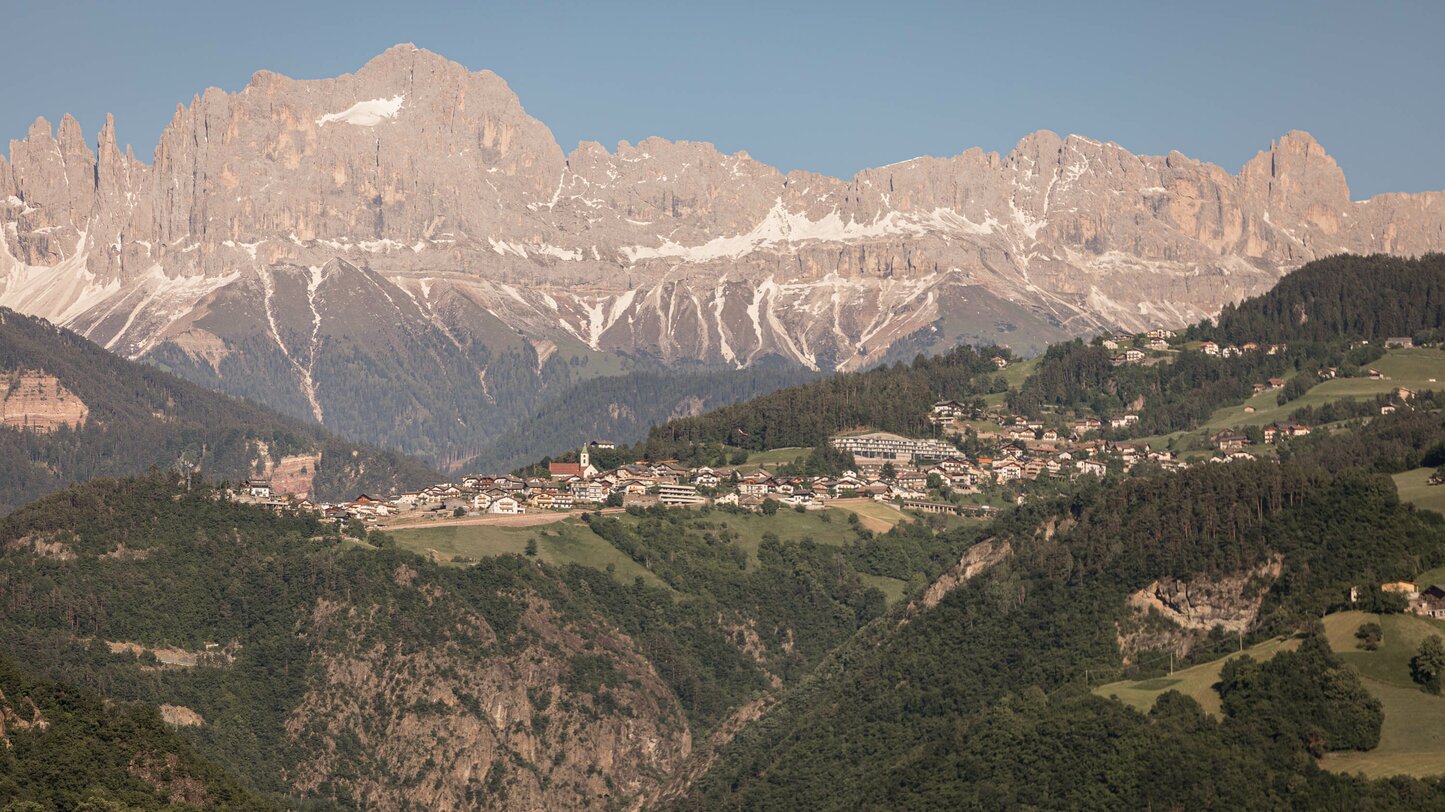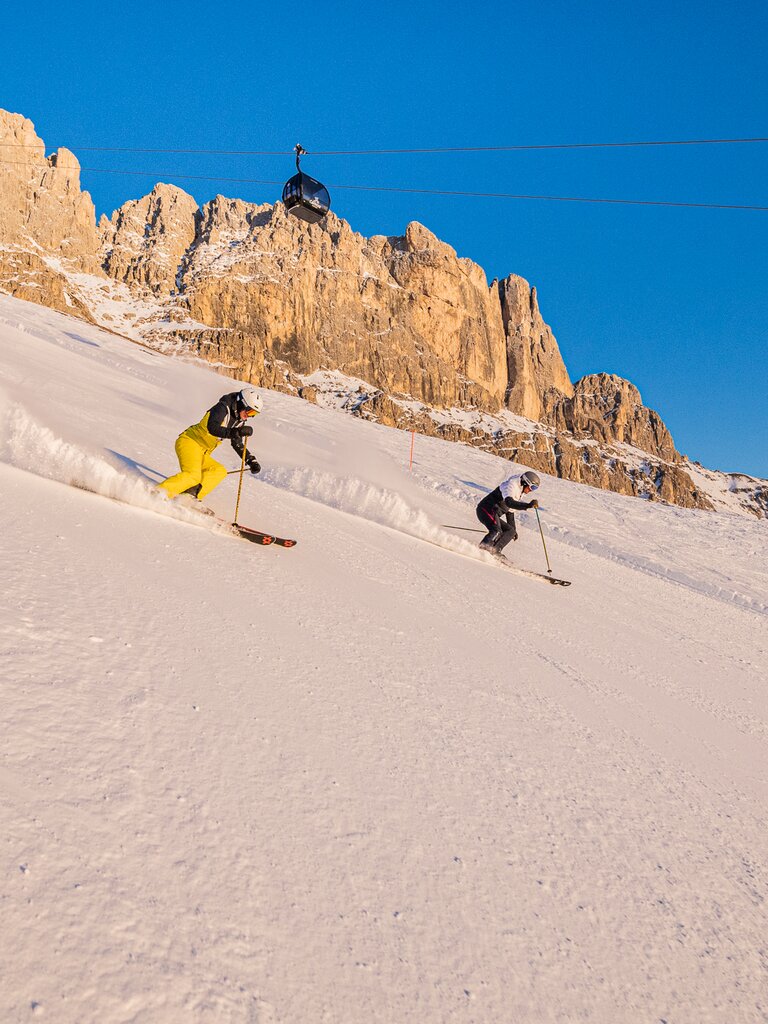“HESSEN”, “SCHUFFENER” and “SACKLER”
The weird and wonderful names of Val d’Ega’s peoples
Nova Ponente – home to the “Hessen”
The sunny village of Nova Ponente was first mentioned in 1150, when it was simply known as “Nova” or “Nove” meaning “new, cleared land”. The village was split into two language communities: the people in the west spoke German, while the people in the east spoke Ladin. Eventually, each part of the village got its own name: the German-speaking area became known as “Deutsch-Nove” and the Ladin-speaking area was called “Welsch-Nove” – the origins of the modern-day names Deutschnofen (Nova Ponente) and Welschnofen (Nova Levante). The story goes that centuries ago miners from the German regions of Swabia (“Schwaben”) and Hesse (“Hessen”) came to Nova Ponente and settled here, bringing with them their local dialects. However, research into the local dialect has found that many of its characteristic elements come neither from Swabia nor from Hesse but instead from Bavaria. Nevertheless, the story and the nickname have stuck – people from Nova Ponente are to this day known in Val d’Ega as “Hessen”.
Nova Levante – home to the “Schuffener”
The German-language name Welschnofen can be traced back to the year 1429. The Welsch part of it comes from Welsche, the name given to speakers of Ladin - an ancient Romance language still spoken in the region today. The influence of Ladin, which is similar to Swiss Romansh and Friulian, can be seen in the names of many areas of land and farmsteads in the village such as Plun, Kaldrun, Zenai, Frin. Until the 17th century the people here spoke their own variation of Ladin, similar to that found in the nearby valley of Val Gardena. People from Nova Levante are still known locally as “Schuffener”. This comes from the "Schuffa" soup, a simple yet rather tasteless broth often eaten in this poor farming community in centuries past. It may not be the most complimentary of nicknames, but the locals have embraced it and even write it in huge letters on a banner which is carried through the village during the carnival celebrations each year.
Collepietra – home to the “Kloatznstingl”
The locals in Collepietra are known as “Kloatznstingl”. This name comes from the dialect word Kloatzn meaning dried pears. This is a key ingredient used to fill the delicious Krapfen made here. A local specialty often served on special occasions such as celebrations and religious festivals, they were for a long time an important source of income alongside agriculture, animal husbandry and winemaking.
San Valentino in Campo – home to the “Kohlsackler”
The nickname “Kohlsackler” (“charcoal sacks”) harks back to the days when making charcoal was an important source of income in the region, especially here in San Valentino in Campo. Home today to South Tyrol’s only observatory, the village was for many centuries a poor farming community. Locals would burn the wood from local forests and fill the charcoal into sacks to be sent to the nearby town of Bolzano.

